Good Grasses
Why are these grasses considered ‘Horse friendly’
In a nutshell these are higher fibre, lower NSC (sugar) grasses.
They have not been selected for traits that promote rapid weight gain and milk production. They tend to grow more slowly than ‘high production’ rye-grasses/tall fescues for example.
They also grow well on less fertile country.
Therefore land which has been fertilised or limed to where the pH is higher than 6.2 will tend not to suit these grasses.
Grasses to Sow

For Recreational Horses & Ponies
Brown-top, Cocksfoot, Yorkshire Fog, Crested dog's Tail
For Performance or Breeding Horses, add...
Prairie grass, Grazing brome, Timothy
Crested Dog's Tail
This is a very common grass especially in 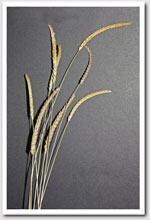 dry areas and is great for horses. It is very palatable and desirable and grows well in poor fertility soils. Click on the image for a bigger picture.
dry areas and is great for horses. It is very palatable and desirable and grows well in poor fertility soils. Click on the image for a bigger picture.
*We are now including this grass in the ‘Recreational Horse Mix’ (for people with kids ponies or those who just want the quiet ride at the weekend), along with brown-top, yorkshire fog, and cocksfoot.
Brown Top
A great grass for  horses and ponies
horses and ponies
Persists in low-fertility soil
Under 10% NSC
Tends to smother clover growth (good!)
Click on the image for a bigger picture.
Cocksfoot
Sometimes referred to as Orchard Grass -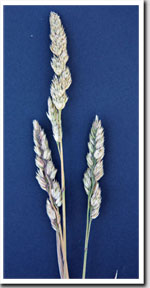
a hardy, drought-tolerant grass with deep roots.
No endophyte fungus.
Withstands close grazing.
Tolerant to pest attack, but can suffer fungal rust disease.
Once established competes well with rye-grass.
Click on the image for a bigger picture.
Yorkshire Fog
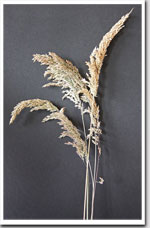 Doesn't mind wet conditions
Doesn't mind wet conditions
Thrives on infertile and acidic soils
Good as part of a mix.
Dominates other species unless kept closely grazed.
Click on the image for a bigger picture.
Prairie Grass
Prairie grass is a large-leafed grass which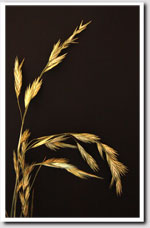 grows well during winter and early spring, and tolerates drought - but only persists for about four years
grows well during winter and early spring, and tolerates drought - but only persists for about four years
It does not tolerate waterlogged conditions, animal treading or acidic soil.
It does grow well on the eastern coasts of the North and South islands.
Grazing Gala brome is related and also desirable
Timothy
In about 1720, American farmer Timothy  Hanson began to promote this grass as a hay crop in North America, and it has kept his name ever since.
Hanson began to promote this grass as a hay crop in North America, and it has kept his name ever since.
It is best suited for the moist, cooler conditions of South Island dairy pastures. Timothy has a distinctive bulrush-shaped seed head, similar but smaller than Phalaris. Timothy is desirable whereas Phalaris is not. Timothy is usually only included as part of a mix for Performance or Breeding as it is a higher sugar grass than the likes of Brown-Top and it doesn’t stand up to heavy trampling.
Makes great hay
Grows only on moist, heavy soils in cooler regions and is highly palatable to stock but is uncompetitive with other plants, so needs light grazing.
Not very drought tolerant. Excellent stock feed.
Helpful Weeds
In moderation the following plants are fine in your paddock.
Plantain
You will most likely get some plantain  growing anyway (without actually sowing it) and that is OK.
growing anyway (without actually sowing it) and that is OK.
It is a plant that is comparatively high in NSC’s (sugar).
Anything with broadleaves tends to be as that is where sugar gets stored as starch. This is why it is palatable and fattening.
Click on the images for larger view.
Chicory
Advantages: High in minerals and drought resistant due to deep roots.
Disadvantages: Tends to be high in protein (nitrates) and is higher in potassium than grasses. Tends to take over.
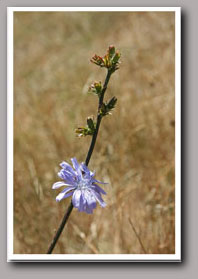 It is considered a high performance finishing pasture for sheep, deer and cattle and is known to boost milk production in dairy cows. ie for rapid weight gain and milk production!
It is considered a high performance finishing pasture for sheep, deer and cattle and is known to boost milk production in dairy cows. ie for rapid weight gain and milk production!
Therefore it is very similar to lucerne: it has benefits for some horses at some times. As a rule it is not suitable for ponies and recreational riding horses.
OK But don't sow.
These are grasses are nothing to panic about. If they are in your paddock you don't have to remove them but don't sw them especially.
Sweet Vernal
Smells ‘sweet’ but not meant to be very 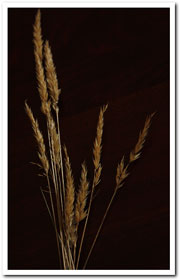 palatable to horses although our horses have eaten lots of sweet vernal hay no problem.
palatable to horses although our horses have eaten lots of sweet vernal hay no problem.
It is not a desirable grass as it contains ‘coumarin’ which itself is only harmful if the grass gets a mould on it which converts coumarin to ‘dicoumarol’ which inhibits normal blood clotting.
If you have it in your pasture just keep an eye out for any moulds that may develop over summer, (which you need to do on all the grasses anyway)
Kikuyu
Kikuyu is very palatable to horses but is undesirable because it can poison horses in two ways..
1. It contains significant levels of soluble oxalates likely to be high during periods of rapid growth. These compounds bind serum calcium and magnesium causing these minerals to become unavailable for their normal functions in bone maintenance and muscle contraction. If large amounts are ingested at once, the drop in available calcium causes muscles tremors and weakness. Smaller amounts over time can cause severe damage to the kidneys and will eventually kill the horse. Over time the horses bones lose so much calcium that they become soft and misshapen - a disease referred to in Australia as Big Head.
2. Outbreaks of Kikuyu poisoning - an often fatal disease, have occurred sporadically in New Zealand and Australia. During late summer and autumn, this disease is most often reported in sheep and cattle. The disease is of concern to horse owners however, because although the causative agent is still unproven, there is an excellent chance it is a fungal endophyte. Kikuyu poisoning causes drooling, dehydration, abdominal pain, depression and staggers. Outbreaks tends to occur in autumn after a prolonged summer drought, when rapid growth of the grass is stimulated by rainfall or irrigation.
 Calm Healthy Horses
Calm Healthy Horses